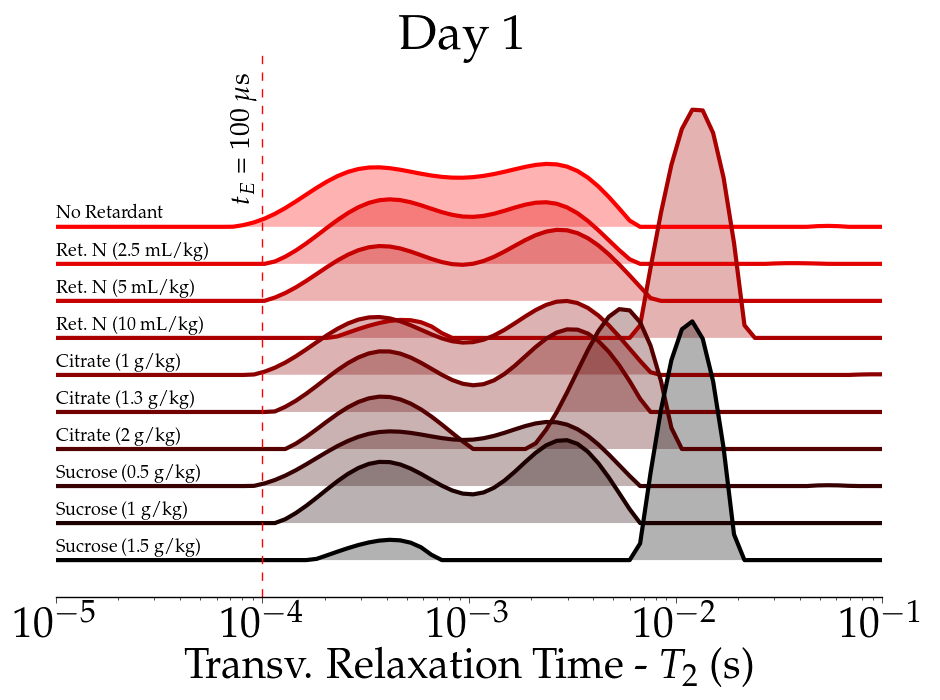Investigating Effects of Retardants in portland cement using Time resolved NMR
- University of New South Wales, School of Civil and Environmental Engineering, Sydney, Australia
Bulk properties of cements such as compressive strength and durability are of great importance for many areas, including civil engineering and petroleum industry. Conventional means of controlling the hydration process of Portland Cement may also offer the potential to enhance some of the material bulk properties as a consequence of alterations in its micro-structural organisation. Such control can be achieved through the addition of different organic and inorganic compounds, acting as hydration retardants or accelerants. Nevertheless, the link between microstructure and macroscopic mechanical properties remains elusive and the understanding of growth of the CSH phase and hardening of the evolving paste lacks consistent mechanism-based analysis [1].
Many publications have developed correlations between strength of cements and porosity (eg. [2]), however, further advances in understanding the roles of various microstructural levels and their link to the hydration process are lacking. In view of these uncertainties, the present work combines thermodynamic measurements with time resolved NMR relaxometry methods in order monitor micro-structural development and the effects of retardants during cement hydration.
In all experiments, ordinary Portland cement (OPC) samples were prepared with three different retardants using different concentrations, affecting substantially affect the curing time. 1H NMR was used to monitor the changes of the pore size distribution and the water consumptions in the hydration process, Figure 1, while isothermal differential calorimetry was used to monitor the flux of heat of hydration. Close correlation was shown between the evolution of various parameters of pore structure and the progress of the hydration reaction. These relationships were maintained in the presence of retardants despite the large changes in the reaction progress. This approach shows good potential in the pursuit of understanding the controls on microstructural development during cement hydration.

